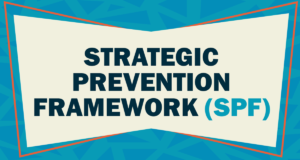Domestic abuse is a pervasive and often hidden issue that affects individuals, families, and societies worldwide. Despite significant progress in raising awareness, millions of victims remain trapped in cycles of abuse. This blog explores what domestic abuse is, its various forms, alarming global statistics, and ways we can collectively work toward prevention and support for survivors.


What Is Domestic Abuse?
Domestic abuse is any pattern of behaviour used by one partner to maintain control over another in a relationship. It transcends gender, age, socioeconomic status, and cultural boundaries. Abuse can be physical, emotional, sexual, financial, or psychological, and often involves coercion, intimidation, and isolation.
Types of Domestic Abuse:
- Physical abuse – Hitting, slapping, choking, or any form of physical harm.
- Emotional abuse – Manipulation, constant criticism, or threats that erode self-esteem.
- Sexual abuse – Forcing or coercing sexual acts without consent.
- Financial abuse – Controlling finances to restrict independence.
- Digital abuse – Using technology to harass, monitor, or intimidate.
Global Statistics: The Scope of the Problem
Domestic abuse is a global crisis with shocking prevalence rates:
- 1 in 3 women worldwide experience physical or sexual violence by a partner in their lifetime.
- Every minute, 20 people in the United States are victims of physical abuse by an intimate partner.
- In 2021, 27% of women aged 15-49 reported experiencing intimate partner violence globally.
- Domestic abuse accounts for 40-70% of female homicides in many countries.
These statistics underline the urgent need for action. Domestic abuse is not just a personal issue; it is a public health and human rights crisis.
Why Does Domestic Abuse Persist?
- Cultural Norms: In some cultures, abuse is normalized or justified as part of traditional gender roles.
- Economic Dependency: Victims often stay in abusive relationships due to financial insecurity.
- Fear and Shame: Fear of retaliation, social stigma, or family rejection keeps many victims silent.
- Lack of Awareness: Many victims and even bystanders fail to recognize abusive behaviour.
The Long-Term Impact of Domestic Abuse
Domestic abuse leaves lasting scars on victims and society at large. Its consequences include:
- Physical health issues: Chronic pain, injuries, and long-term illnesses.
- Mental health struggles: Anxiety, depression, PTSD, and suicidal thoughts.
- Intergenerational trauma: Children exposed to abuse are at greater risk of becoming victims or abusers later in life.
- Economic costs: Billions of dollars lost annually in healthcare, law enforcement, and lost productivity.
How to Support Victims and Prevent Abuse
- Recognize the Signs:
- Unexplained injuries or frequent absences from work.
- Sudden withdrawal from friends and family.
- Low self-esteem or excessive fear of a partner.
- Offer Support:
- Listen without judgment. Assure them it’s not their fault.
- Provide information about resources like shelters or hotlines.
- Respect their decisions, even if they choose to stay temporarily.
- Promote Awareness:
- Educate communities about healthy relationships.
- Challenge cultural norms that perpetuate abuse.
- Support organizations working to end domestic violence.
- Advocate for Policy Change:
- Push for stronger laws against domestic abuse.
- Ensure survivors have access to justice, healthcare, and support services.
- Advocate for education programs in schools to teach about consent and healthy relationships.
Resources for Survivors
If you or someone you know is experiencing domestic abuse, help is available:
- National Domestic Violence Hotline (USA): 1-800-799-SAFE (7233)
- Women’s Aid (UK): 0808 2000 247
- United Nations Helpline: Global directory of support services
Remember, seeking help is a sign of strength, not weakness.
Breaking the Cycle
Ending domestic abuse requires collective effort. Survivors need support, not judgment. Communities must challenge harmful norms. Policymakers must ensure justice and protection. Together, we can create a future where every individual is free from fear and harm within their own home.
If you’ve experienced or witnessed domestic abuse, know that you’re not alone. Share your thoughts, stories, or questions in the comments to help break the silence and build awareness.




